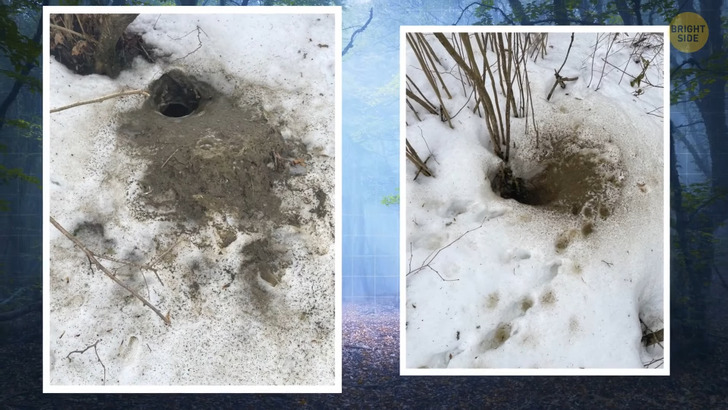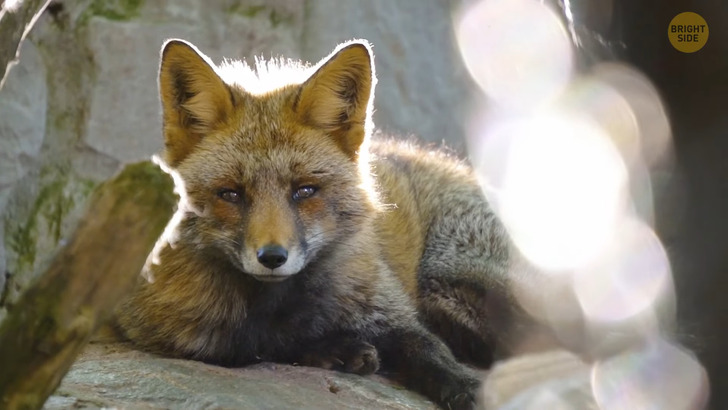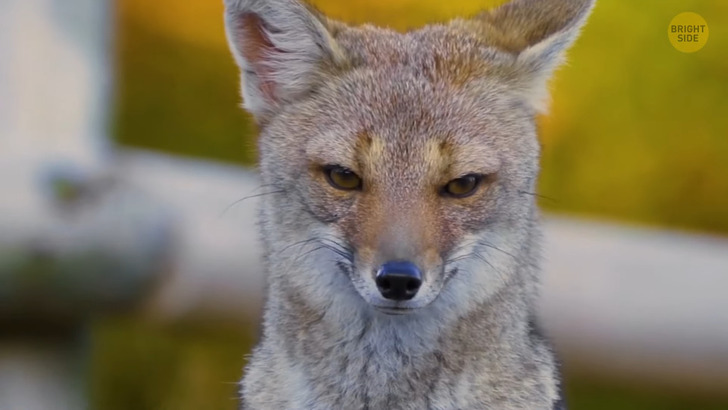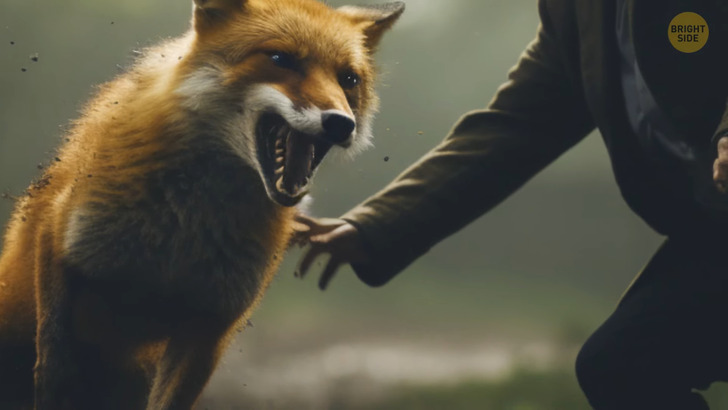Helen Hunt, 60, Stuns During Her Latest Appearance, and Her Lips Become the Center of Attention

In the heart of a dense forest, a person embarks on a forest hike, delving into the hidden depths of nature’s playground. But this isn’t your ordinary stroll through the trees. It takes a turn toward an eerie and spine-chilling discovery.
Our protagonist, with a twinkle of curiosity in his eyes, discovers a burrow hiding in the shadows. Curiosity outweighs fear, and our explorer comes up closer. It’s not some random burrow — this one belongs to a fox. So, what if it’s the wrong move, and they should just run away?

In the joyful season of spring, when nature comes alive with vibrant energy, foxes engage in their intricate dance of life. It is during this time that foxes seek solace in their underground sanctuaries. Throughout the rest of the year, when the world around them flourishes, foxes prefer to bask in the sun, finding comfort above ground, except when the weather takes a turn for the worse. It is in the most inclement conditions that they seek refuge in their burrows, shielding themselves from the elements.
These burrows, known as fox earths, typically consist of only a few entrances, occasionally covered with scattered soil and debris. During winter months, industrious foxes diligently dig additional burrows in anticipation of the forthcoming spring. Sometimes, among the remnants of their subterranean journeys lie the remains of fallen foxes, a testament to the cycle of life within these intricate underground networks.
If one were to explore the vicinity of a fox earth, one would notice fresh traces of food remaining outside the burrows during the months of April to June. It is during this period, when playful fox cubs grace the earth with their presence, that remnants of their feasts can be found — a delightful sign of life unfolding.

So what do these earths look like? After all, there are other animals with dens in the forest, too. Now, let’s get to the heart of the matter. Fox dens, the elusive abodes of these mischievous beings, tend to be located in areas abundant in lush greenery.
You might find these creatures hiding beneath the sheltering branches of a tree or seeking refuge beneath imposing rocks. If you stumble upon a cozy little hole that appears tailor-made for a fox, and you catch a whiff of that unmistakable “aroma” accompanied by other intriguing clues like scattered bones, you’ve likely discovered a fox den.
Alas, my curious friend, there’s no foolproof recipe for where these sly foxes choose to build their dens. They possess an uncanny ability to adapt to diverse environments, be it open grasslands, dense forests, or even the unforgiving tundra. Picture this — a fox’s den consists of a minimum of four to five sections.
We have the grand entrance, the ever-important ramp, the main den itself, and a secret room that doubles as a food stash. Depending on the size of the pack, there might be additional rooms to accommodate the whole gang of foxes. Now, imagine the grand opening to a fox’s den — the entrance and the ramp form a corridor leading about 3 to 8 feet deep into the earth, connecting the outer world with the cozy haven within.

Ah, but there’s more! Foxes, being savvy planners, stockpile their foraged treasures in their dens. Yes, they have their own food caches where they hide all their scrumptious finds. The number of rooms within the den may vary, adapting to the size of the pack, as these crafty creatures ensure there’s enough space for giving birth and raising their adorable offspring. They might even dig extra tunnels and create additional entrances just to keep things interesting.
Now, let’s talk about culinary affairs. Foxes are savvy gourmands who store food in large quantities, ready to weather the winter and the mating season. However, they’re not extravagant hoarders. They usually stash away just enough to last them a few days, considering they don’t dine on fresh prey every single day. Berries and fruits often grace their storage chambers, while any delectable meat takes center stage in their culinary adventures.
Curious about the proximity of fox dens to one another? Well, if the land is bountiful with abundant food and fresh water, you might stumble upon two or three fox dens within a 10-square-mile radius. But if resources are scarce — oh, you might have to expand your search to cover a sprawling 20 square miles to find just one den!
But the saga doesn’t end there. Foxes, true to their resourceful nature, often have multiple dens. They maintain the primary den, often known as the “natal den,” which holds sentimental value. Additionally, they keep a backup den for some unpredictable circumstances. And let’s not forget their knack for claiming abandoned or “borrowed” dens as their own. Such clever tricksters, aren’t they?

Now, let’s talk about these marvelous creatures themselves. Foxes come in a delightful array of species, sizes, and variations scattered all across our planet. But the star of the show is the red fox, found on every continent except frosty Antarctica! While most foxes prefer the tranquility of rural landscapes, don’t be surprised if they venture into the realms of urban and suburban dwellings, where their path might cross with humans.
Ah, the encounters between a fox and a human — a tale of two extremes. Some kind souls attempt to win over these animals, offering them tidbits and coaxing them into their palms. On the other hand, there are those who tremble at the mere thought of a fox, fearing their crafty and ferocious nature. Now, picture this scenario: what if a fox approaches you or launches an attack?
Typically, foxes pose no threat to humans and harbor no ill intentions. They prefer to feast upon small mammals or livestock, reserving their aggression for hunting or self-defense. Yet, there have been reported cases of foxes crossing paths with humans, including incidents. Therefore, knowing what steps to take if a fox approaches or pounces on you is crucial.

Foxes can indeed be domesticated. Yet they remain wild at heart, and their actions can be wildly unpredictable. They might momentarily embrace their tamed side, only to snap back into their untamed instincts when feeling cornered, threatened, hungry, or simply scared.
Naturally, foxes view us humans as potential threats, and it’s in our best interest to reciprocate their cautious approach. Never attempt to approach a fox, even if it appears docile and friendly, as its temperament can shift within seconds, catching you off guard!
Avoid sudden movements and resist the urge to inch closer, as doing so might agitate or frighten our fox friend. In most cases, when a fox spots a human nearby, it will swiftly scamper away or seek refuge in hiding. However, should you find yourself locked in a standoff with a fox, the best course of action is to take a step back and allow it the space it craves.

Should a fox persist in its approach or if you encounter several foxes nearby, my dear friend, give them a wide berth and allow them their space. Refrain from approaching or attempting to feed them, especially by hand! Let them carry on with their foxy affairs while you observe them from a distance.
In a situation where a fox becomes trapped, such as finding its way into a room, I implore you to remain calm. Avoid raising your voice or causing unnecessary commotion, as it may provoke the fox to attack. Instead, remain silent, keep a safe distance from the creature, and provide it with an escape route. Ensure the doors and windows remain unobstructed, granting the fox the freedom it seeks. In due time, it will make its swift exit.
However, if fortune frowns upon you, and you find yourself in the unfortunate circumstance of a fox attack, remember to stay composed. Refrain from unleashing your pets or pursuing the fox — just allow it to retreat on its own accord. If the fox persists and refuses to back down, a simple round of applause or a few claps might startle it away. Now you can enjoy the forest!











